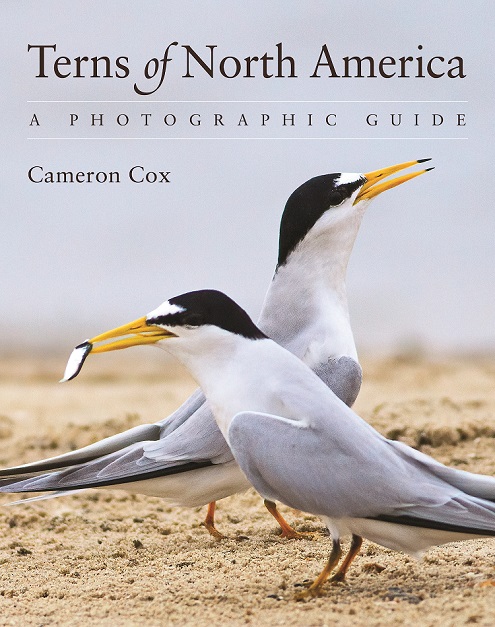
There are 19 species of tern (if you count a couple of noddies and a skimmer, as this book does) in North America. I’ve seen all but one of these species (Aleutian Tern) somewhere or other, and almost all of them in North America, but also almost all of them in Europe and almost all of them in Africa too. My point is not to boast about how many tern species I’ve seen but to point out that although Americans (and to some extent Canadians) might be drawn to this book because of the words ‘North America’ in the title, others should not be put off by those words because this is a very fine identification guide to many terns in many places.
The 325 colour photographs that are described as ‘stunning’ on the book’s back cover actually do live up to that high praise. Not only are they beautiful but they are very useful. The author has chosen the photographs very well to illustrate the identification points. Often, there are single images of two species, confusable species, in the same postures and at the same distance so that one can linger looking at the differences. These must have taken some finding! The captions to the photographs are very well written to give you the best guidance possible.
I like the author’s style. He doesn’t pretend that identifying terns is always easy but his job is to make it easier for the reader. And by keeping things simple and relying on the key points he succeeds. His warnings that plumage colour is a bit unreliable (depending on lighting and background) and that size is a bit unreliable (depending on all sorts of things) are well made. There must be about 20 differences between adult Common and Arctic Terns but I’d be surprised if we’ve all got their identification right every time (I haven’t!). This book is an excellent guide to some features which I think I had internalised through experience but couldn’t have told you.
It’s a good guide to ageing terns too.
There are some fun quiz questions, based on images, which will show you whether you have been paying attention – I didn’t get them all right by any means – but they were great.
There are lots of images of the finest, most beautiful, tern ever and anywhere, the Roseate Tern, although one can never get enough of this species (or is that just me?). I don’t think the author draws attention to the greater prominence of the Roseate Tern’s legs in flight than those of Common Terns but I have found that to be a helpful, though not diagnostic, aid in spotting the small number of Roseates in colonies with many more Commons, particularly if viewing from afar. And absolutely, Roseates tend to fly higher, hover less but hover more energetically than Commons. You see? It’s not all about the colour of the primaries!
This really is a very good book, and not because it deals with some of my favourite species but because, as an identification guide, it approaches the subject in a very thoughtful and helpful way both in the images and the words. I don’t think many could have written such a clear book on this subject so I am very grateful to Cameron Cox for leading the way.
The cover? Very pretty terns, Least Terns. And a good indication of the quality of the images inside the covers – I’d give it 9/10. It might have been 10 if there weren’t that fancy italicised ‘of’. Why draw attention to the least important word in the title?
Terns of North America: a photographic guide by Cameron Cox is published by Princeton University Press.
[registration_form]